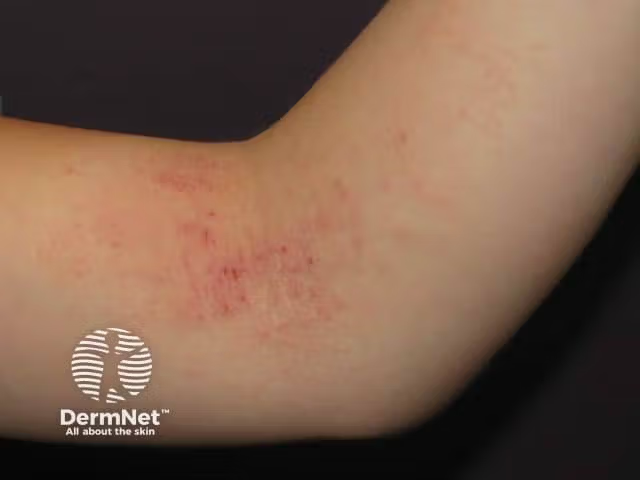- Case-Based Roundtable
- General Dermatology
- Eczema
- Chronic Hand Eczema
- Alopecia
- Aesthetics
- Vitiligo
- COVID-19
- Actinic Keratosis
- Precision Medicine and Biologics
- Rare Disease
- Wound Care
- Rosacea
- Psoriasis
- Psoriatic Arthritis
- Atopic Dermatitis
- Melasma
- NP and PA
- Skin Cancer
- Hidradenitis Suppurativa
- Drug Watch
- Pigmentary Disorders
- Acne
- Pediatric Dermatology
- Practice Management
- Prurigo Nodularis
- Buy-and-Bill
News
Article
Dermatology Times
Enhancing Atopic Dermatitis Treatment: Insights From Cutting-Edge Studies and Clinical Perspectives Part 3
Author(s):
A 5-expert panel continues their conversation on atopic dermatitis, discussing patient-centered care and key takeaways.

Experts Linda Stein Gold, MD; Michael Cameron, MD; James Del Rosso, DO; Brad Glick, DO, MPH; and Lisa Swanson, MD, continue their conversation on enhancing atopic dermatitis treatment.
Read part 2 here.
Patient-Centered Care
Stein Gold emphasized the significance of prioritizing patients’ needs and preferences, stating, “We must focus on patient-centered care to ensure optimal outcomes.” Glick agreed with this sentiment, highlighting the value of tailoring treatment plans to meet the individual needs of patients. He said, “Patient-centered care involves actively involving patients in decision-making and treatment planning.” Glick emphasized the importance of patient-centered care by discussing the need for topical therapies that are well tolerated, are effective, and do not cause stinging or burning, highlighting the focus on patient comfort and treatment experience. The experts engaged in a comprehensive dialogue on the principles of patient-centered care, emphasizing the importance of empathy, communication, and shared decision-making in clinical practice.
Key Takeaways
The Frontline Forum panel concluded with Stein Gold asking each expert to share their key pearls from the discussion. “The first key takeaway from my perspective is [that] the extra effort has gotten a lot better,” Cameron said. “If you have not written [a prescription for] ruxolitinib cream recently, the vast majority of plans or all the plans are now only 1-step edit, and they have guaranteed access with pretty much all commercial plans. So that perception of access has changed, and it’s less effort than you may realize. We’ve also never seen a topical with such an elegant mechanism of action that’s so pertinent to so many of the mediators of AD, both inflammation and itch. It’s hitting 5 or 6 cytokines that are pertinent to AD pathophysiology.”
Swanson added to that thought and said, “I would say efficacy and speed of improvement of a topical corticosteroid, in my opinion. Even a superpotent one like clobetasol without being a steroid in a nonstinging preparation that is safe and effective [for those as young as] 2 [years].”
“I would segue from what Lisa [Swanson] said, that in terms of the use or nonuse of corticosteroids, that we don’t have concerns about the local [adverse] effect profile that we see with corticosteroids,” Glick responded. “So lack of stria and dyspigmentation—especially in [pediatric patients], especially in individuals [with skin] of color, that pediatric population skin color. Of course, I can’t [end] without saying that I don’t think we’ve seen a product topically that reduces itch so rapidly such as [what] we reviewed [in] the SCRATCH-AD data.”
Del Rosso said, “The rapidity of onset against itch and the favorable efficacy against the visible disease are extremely impressive. The fact that the [once-daily treatment] was still very effective against itching was extremely important compared with the most commonly prescribedmidpotency topical corticosteroid, even among our colleagues. Because they’re not typically going to be using higher potency, it was better at 4 weeks on all the parameters. So that’s also significant because it shows that people think that corticosteroids do more than they’re doing.”
In conclusion, the discussion highlighted the urgent need for innovative treatments in AD beyond traditional steroid therapies. With the introduction of ruxolitinib cream and its promising results in the SCRATCH-AD and TRuE-AD3 studies, Stein Gold, Cameron, Del Rosso, Glick, and Swanson hope for faster and more effective relief from symptoms such as itching, which would improve patients’ quality of life. As dermatologists strive to provide patient-centered care, it’s clear that continued research and the adoption of new therapies will play a pivotal role in addressing the unmet needs of patients with AD.







